
Exploring the Forbidden City in Beijing – Photo: David Delagarza | AirlineReporter
Back in April, I wrote about taking my nine-month-old on a series of long-haul flights to New Zealand. I concluded that piece with the rather ominous sentence, “Toddlerhood is just around the corner, and I know that won’t be the same experience.” As it turns out, truer words were never spoken.
The genesis of this trip was a Twitter post from one of the airfare alert websites: Denver to Beijing on United Airlines. Cheap. Very Cheap. Heck, the miles alone were worth a substantial portion of the ticket – not to mention this trip would push me up to elite status with United. My wife and I had been considering visiting China to see some friends, but we hadn’t seriously thought about going this year. The availability of cheap tickets over Labor Day made us reconsider. Some quick discussions and a few clicks later it was settled – we were going to China for a week at the end of August. Does anyone else get that pit of the stomach feeling when buying plane tickets for a big trip?
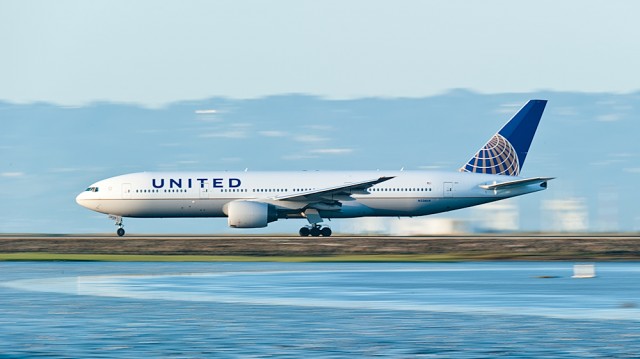
A United Boeing 777 – Photo: Al@fh | Flickr CC
The next decision to be made was whether to bring our fifteen-month-old son with us. Conventional wisdom seems to be that fifteen months is just about the worst possible age to fly – they are too old to sit still, but too young to pacify with electronics. AirlineReporter Associate Editor and fellow father Blaine Nickeson’s exact words were, ’œIt would be AWFUL. I’d strongly recommend against it.’ Other friends told me horror stories of their young toddlers on much shorter domestic flights. No one that I talked to had ever even considered taking their children of that age on long-haul international flights. I myself was firmly set against taking my son along. I’m still not sure how she did it, but my wife talked me into taking him with us. Here we go. Again.
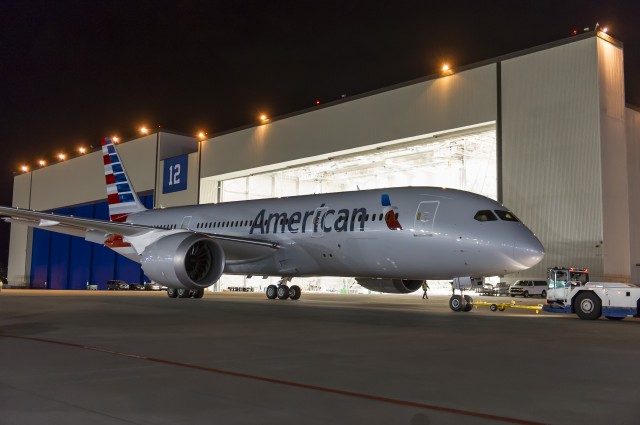
American Airlines’ first Boeing 787-8 being towed at Paine Field – Photo: American Airlines
American Airlines’ first Boeing 787 came out of paint last night giving us a first glimpse at the Dreamliner in AA’s new livery.
When the airline takes delivery, by the end of the year, they will become the second US-based airline to operate the Dreamliner, after United. American has 16 787-8s and 26 of the larger 787-9 Dreamliners on order.
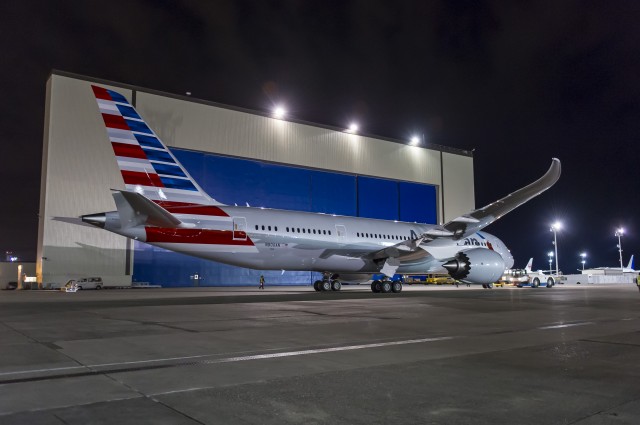
A rear angle of Americans 787 – Photo: American Airlines
Catch more photos of American’s first 787 below.
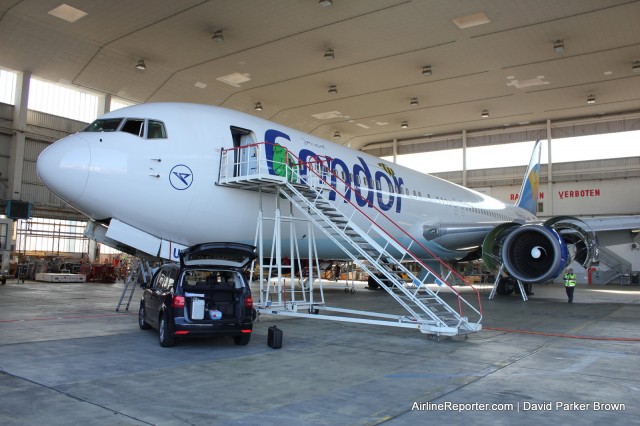
Condor Boeing 767-300ER being worked on in their maintenance facility
With Condor Airlines being a smaller, low-cost carrier, it is not a huge surprise that their on-site maintenance facility at Frankfurt Airport (FRA) is quite small (well, in comparison to others like Lufthansa Technik).
Just because the hangar might not have the volume of other locations, it is a place where the job gets done. Ensuring that aircraft are checked and safe is no easy task, but a very important one.
Condor’s facility at FRA is able to work on one Boeing 767 at a time — and they only work on their 767s and 757s there. Condor sublets out the work done on their Airbus aircraft at other facilities around Europe.
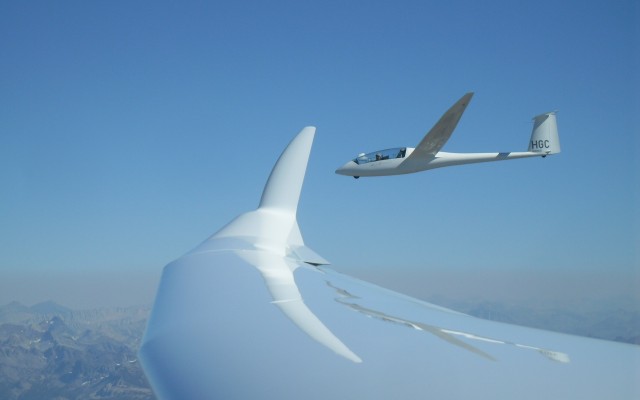
Gliders flying in formation near Lake Tahoe – Photo: Soaring NV
If you’ve ever flown into Reno-Tahoe International Airport (RNO) when the winds are howling out of the west, you know that the approach and landing can be’¦sporty. In fact, it sometimes gets so turbulent that the mainline jets head for Sacramento International Airport (SMF), leaving RNO to Alaska Airlines’ Bombardier Q400 turboprops, which can use RNO’s short crosswind runway. I’ll happily fly into RNO from SEA on the AS Q400s on those bouncy days.
The bumps can mean that conditions are great for soaring. Yes – I’m a glider pilot, and the region around Reno is world-famous for those who love to fly without an engine. It’s an amazing sensation, soaring in our ocean of air. Some flights are like a dream – I just have to think about moving the control stick, and off I go, hunting for lift, as if the glider’s wings are attached to my shoulders.
When you think of gliding, you might have an image of a pilot running towards the edge of a cliff, ready to leap into the air while hanging from a fabric-covered wing. Yes, there are those out there who enjoy hang-gliding, in aircraft that are at the light and slow end of the soaring spectrum. Other than a lack of an engine, they don’t have much in common with a modern high-performance glider.
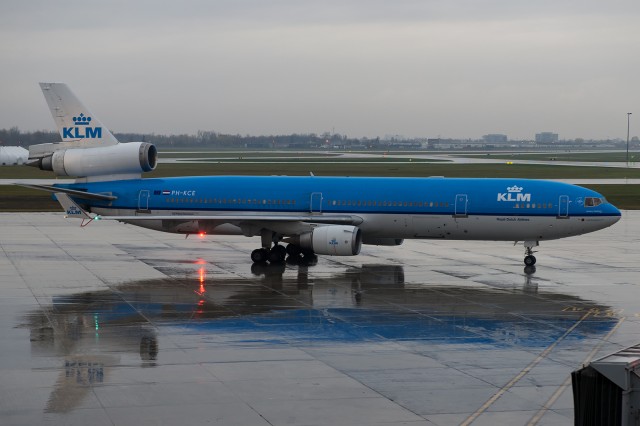
PH-KCE (Audrey Hepburn) arriving at gate A55 after a water cannon salute – Photo: Bernie Leighton | AirlineReporter
In October of 1934, KLM (Royal Dutch Airlines) took delivery of their first Douglas aircraft: a DC-2. This DC-2 was entered into an air race from London to Melbourne. It placed second. Not only did it place second, but it did so carrying a full passenger load. Fast forward to 1993. KLM took delivery of their last, now, McDonnell Douglas aircraft type – the MD-11. Unfortunately for us enthusiasts, October 25th (when KLM’s summer timetable ended) would not only mark the end of the MD-11, but the end of KLM’s eighty-year history of commercially operating McDonnell Douglas aircraft.
All of KLM’s MD-11s were named after women renown for their charitable or humanitarian efforts. The aircraft I was to fly on, PH-KCE, is named after Audrey Hepburn.
Naturally, I had to be a part of the final flight.
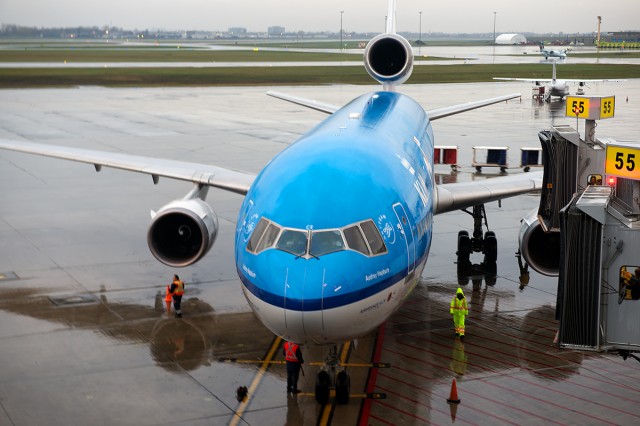
KLM’s last MD-11 to Montreal at the gate – Photo: Bernie Leighton | AirlineReporter
KLM and Aeroports Du Montreal were also very aware that this was the last MD-11 commercial passenger service, ever. They had prepared quite a party at the gate. There was an impressive stack of cupcakes; some bearing a chocolate saying “KLM 95” – along with a soft drinks bar and a photo booth to get your photo taken with an MD-11.







